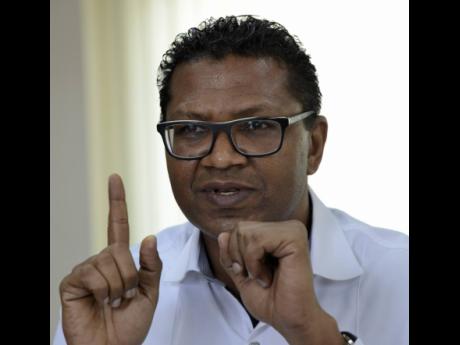Manufacturing: The hope for tomorrow
When considering the conditions that facilitate the growth of a robust manufacturing industry, it is easy to think that the application of capital, the development of new technologies or the access to additional markets are prerequisites for the industry. However, local manufacturers assert that more attention must be given to certain intangible factors in order to experience a resurgence of Jamaica’s sector.
Industry leaders such as Metry Seaga, the managing director of Jamaica Fibreglass Products Limited, argue that there must be a greater emphasis on positioning the economy to meet the needs of the global market.
“Our greatest asset is our location. We are, in the Americas, where Singapore is in Asia. We are a crossroads that can be the hub for global and international trade in the Americas,” Seaga, a former president of the Jamaica Manufacturers and Exporters Association (JMEA), told The Sunday Gleaner.
“However, we need to develop our economy as a logistics centre, and that is how manufacturing will grow. That is how we will … create development like we have never seen in Jamaica.”
The forner JMEA head’s comments echo those of former Minister of Industry, Investment and Commerce Anthony Hylton, who stated as far back as 2014 that manufacturing for local production had no future and a greater effort was needed to integrate manufacturing with the wider global supply chain.
Agreeing with this assessment, Seaga stated: “If we are planning to grow our economy based on the two million people we have here, we are sadly mistaken. We have to build our economy based on the rest of the world.”
In this respect, Jamaica has not slaughtered the goose with the golden egg, it has simply ignored it; and a lack of political will is cited as the reason for the slow progress made in achieving this objective.
Seaga explains: “We have the location to start with, we have a good workforce … we just haven’t trained them. We have the infrastructure, we have a good road network, we have good ports, we have good telecommunications, we have good services. But what we don’t have is the will, or we haven’t had the will up to this point, and we have to make that change now.”
Current JMEA President Richard Pandohie highlighted that, despite the recent noteworthy successes in facilitating small and medium-sized enterprises, the lack of focus is the reason only marginal improvements have been observed.
Pandohie suggested that the future lies with creating a skilled population to meet the needs of the local sector. In his view, concentrating on human capital development is paramount. He suggested that this can be achieved by equipping the nation’s technical schools, supporting Prime Minister Andrew Holness’s decision to push STEM education and reorienting the economy to absorb those improved skills.
“We need to invest in education. (Unfortunately), in the worst of times we underinvest in our people, we underinvest in education, we underinvest in health, and I think that is some of the chickens coming home to roost now,” Pandohie said.
He added that, despite the gains made in the literacy rate over previous years, Jamaica still lacks a competent workforce that can transform the country into a first-world oasis.
Creating and attracting talent must also be matched with an improvement in the quality of life of the country’s citizens, he argued, as “machines cannot make things by themselves and factories cannot export by themselves”.
Invest in education
Simultaneously, Pandohie noted, this investment in education must also be matched with increased allocations to research and development in order to ensure that there is a constant supply of innovation. This is key to driving sustainable economic growth as innovation is the missing link in Jamaica’s quest for development.
“We need to create an enabling environment to allow for improved productivity and innovation. Jamaica’s labour productivity has been declining every year for about 20 years.”
Said the JMEA boss: “There is very little innovation happening in the country ... whether it is from the university or the commercial sector. The investment in innovation is simply not an option if we are going to drive the economy forward.”
According to the UNESCO Institute for Statistics, expenditure on innovation accounts for more than 4.5 per cent of gross domestic product for more advanced countries like South Korea and Israel. This is compared to 0.06 per cent for Jamaica.
Pandohie recommended that a concerted push by both the public and private sectors is needed to rectify this chronic underinvestment and achieve value-added production in manufacturing.
Therefore, positioning the economy through logistics and developing more innovation is necessary for manufacturing to regain its strength and roar as a graceful beast of the economy. If this is achieved, the world would see that despite being small, the country can truly punch above its weight and be the manufacturing pearl of the Caribbean.

